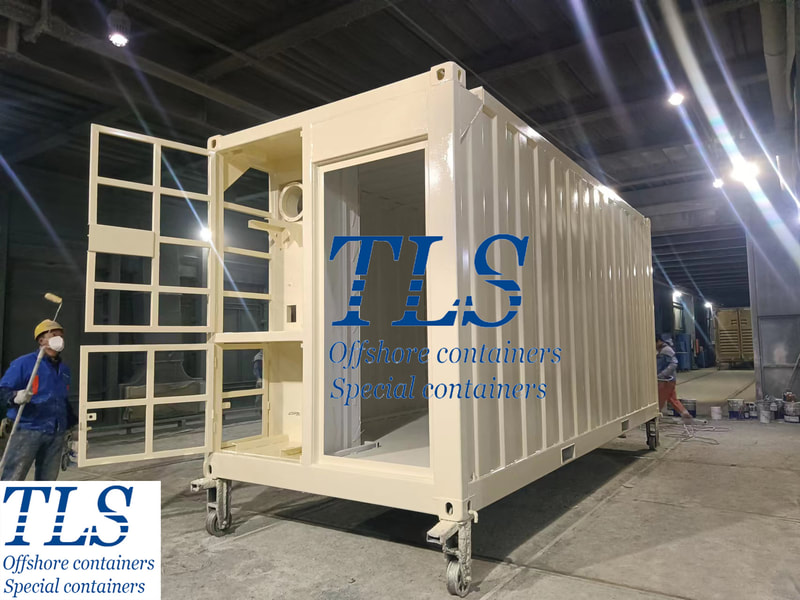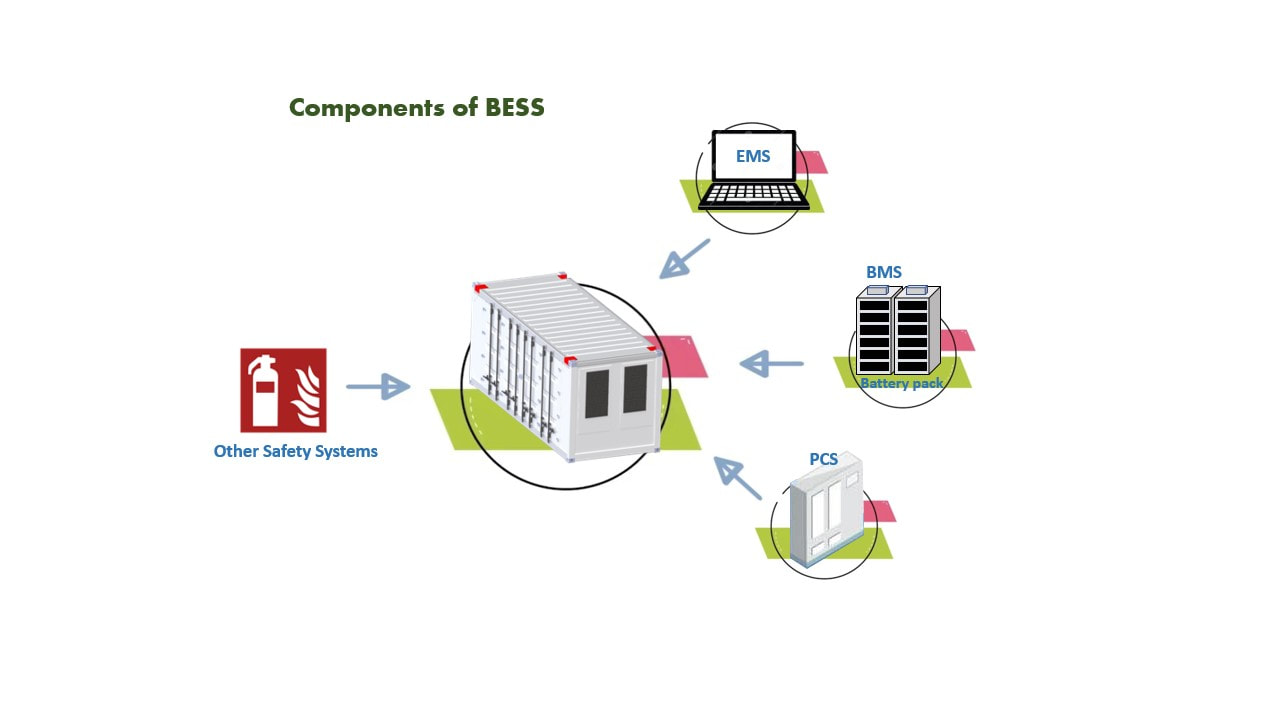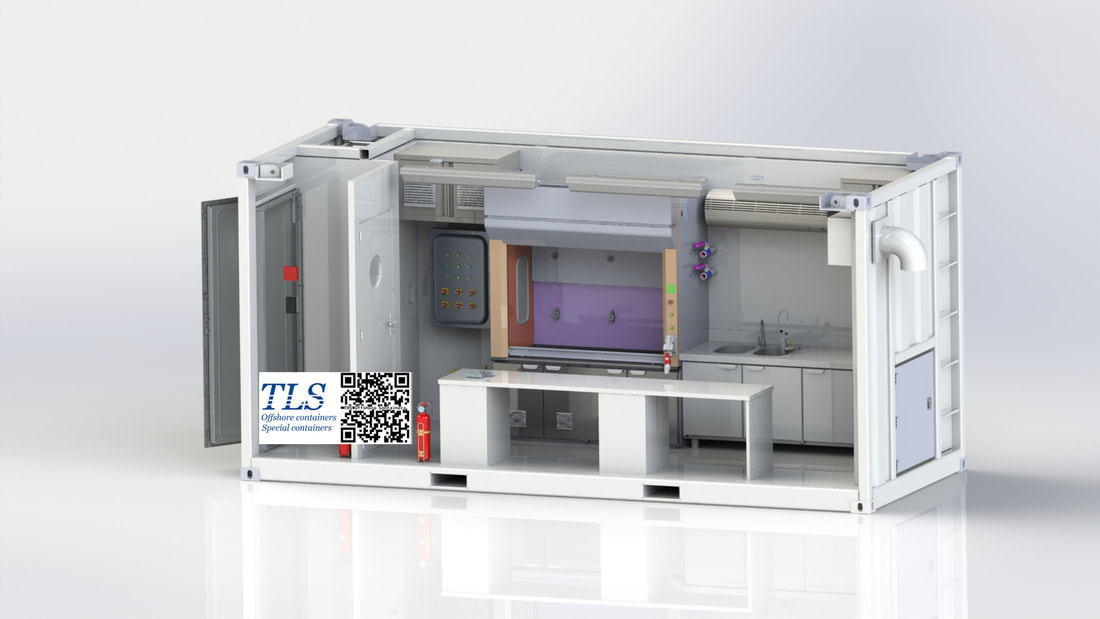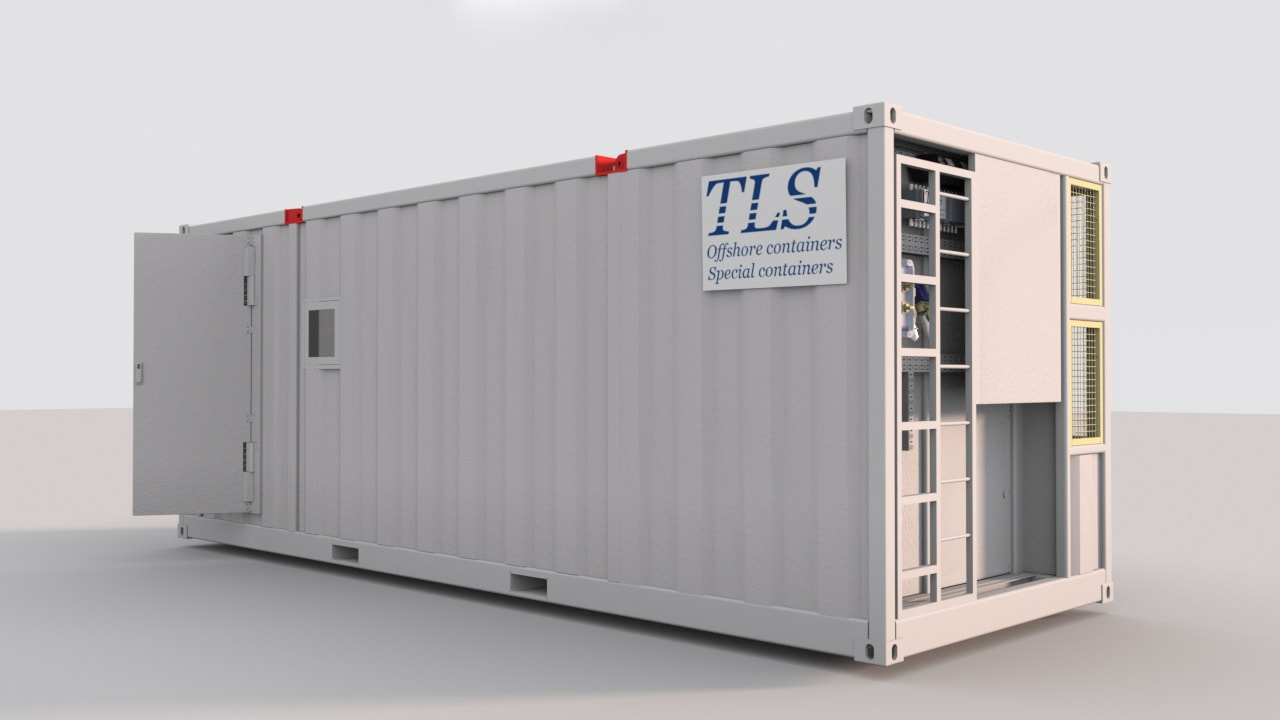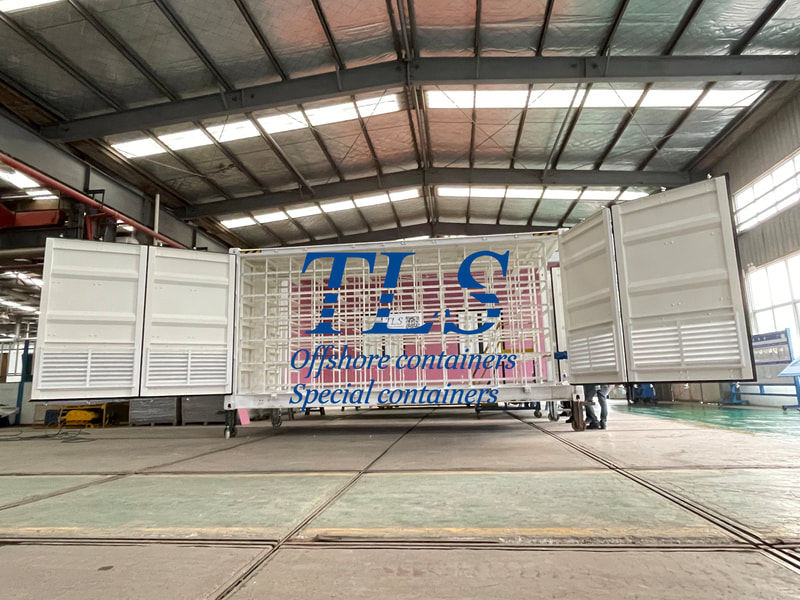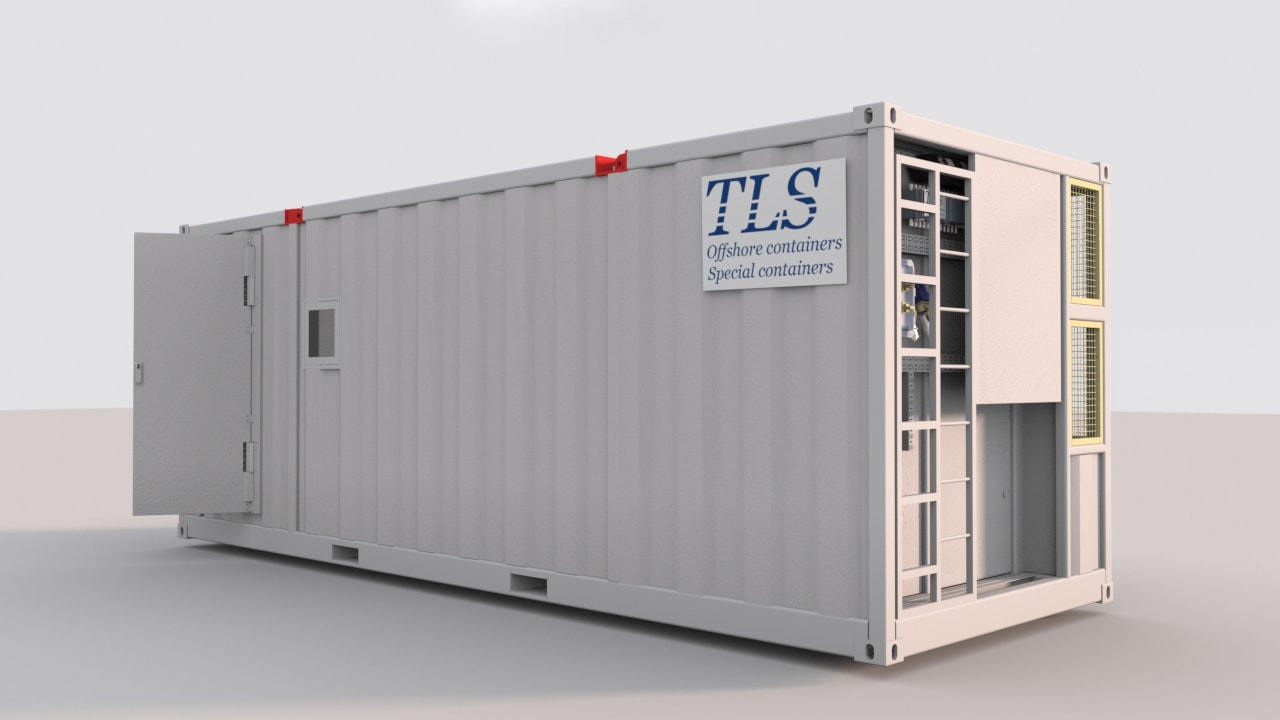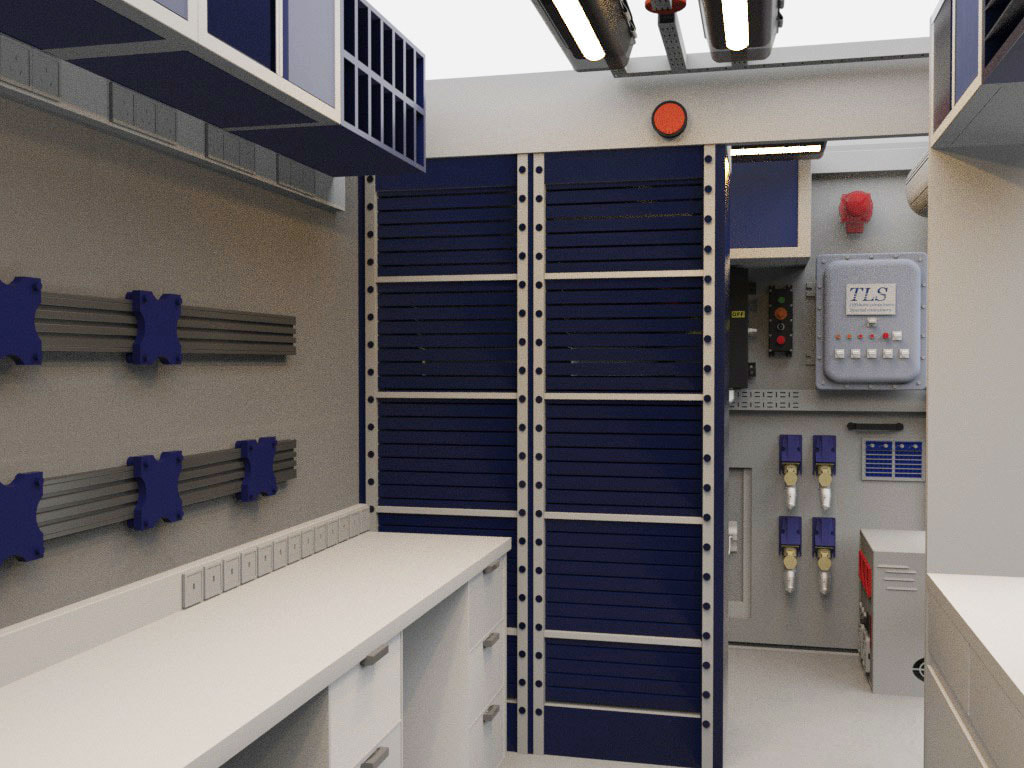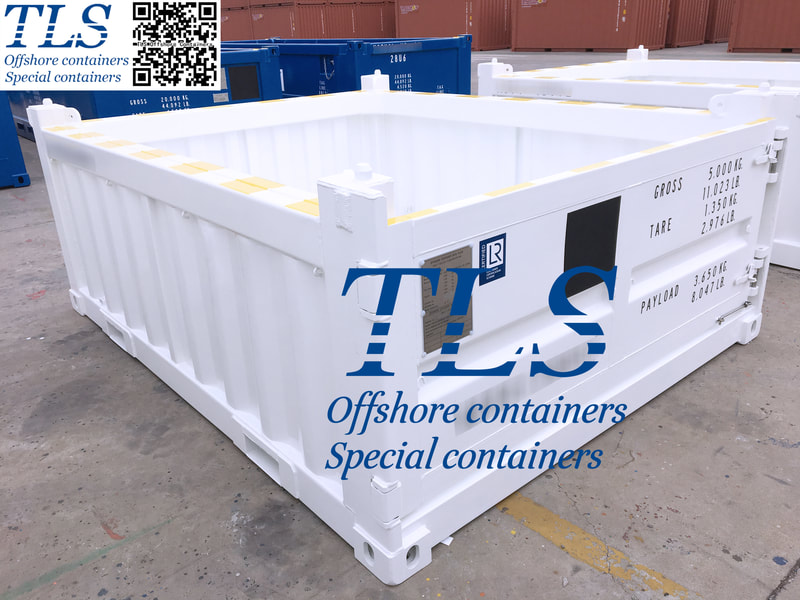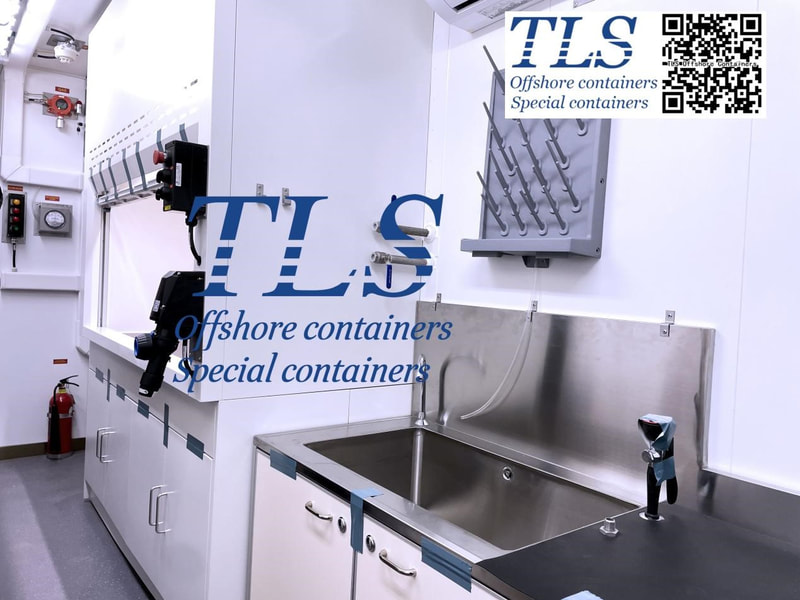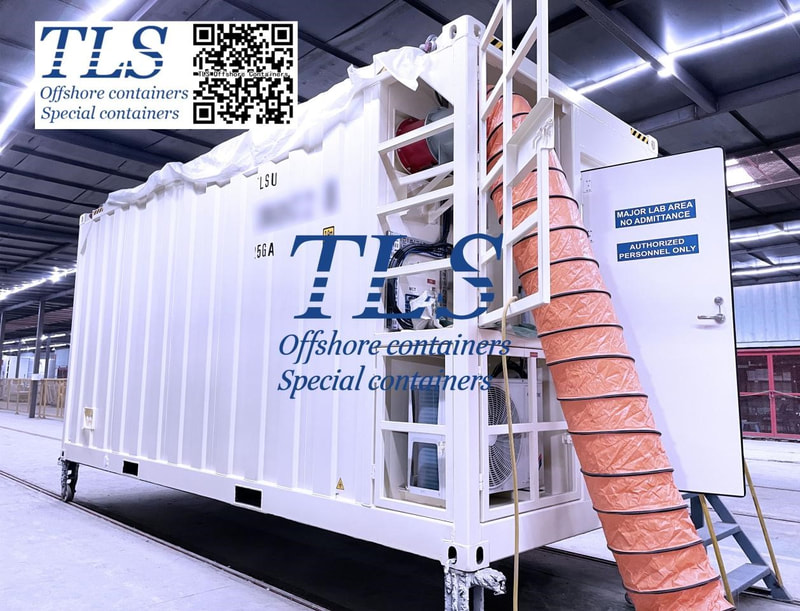|
The negatively pressurized laboratory container is a specialized container that is designed to create a controlled laboratory environment where the air pressure inside the container is lower than the pressure outside the container. This creates a negative pressure differential that helps to prevent the release of hazardous or contaminated materials from the container into the surrounding environment. Negatively pressurized laboratory containers are used in a wide range of industries, including healthcare, pharmaceuticals, and oil and gas exploration and production. They are commonly used to test and analyze materials or substances that are potentially hazardous or contagious, such as biological or chemical samples. These containers are typically constructed with high-quality materials and are designed to withstand harsh environmental conditions, such as extreme temperatures and high humidity. They may also be equipped with specialized ventilation systems and air filtration systems that help to control the air quality and prevent the release of any hazardous or contaminated materials. Negatively pressurized laboratory containers may come in different sizes and configurations, depending on the specific needs of the user. Some containers may be designed to be portable, while others may be designed to be permanently installed in a fixed location. Overall, negatively pressurized laboratory containers play a critical role in ensuring the safety of personnel and protecting the environment from potential hazards in a variety of industries.
TLS Offshore Containers specializes in the design and manufacture of high-quality offshore containers for a wide range of industries. One of our most innovative products is laboratory container, which is specifically designed to meet the unique requirements of scientists and researchers who need to do experiments in remote or challenging environments. The TLS laboratory container is a self-contained unit that includes all the equipment and facilities needed to conduct scientific experiments in the field. It is made from high-quality materials and is built to withstand the toughest conditions, including extreme temperatures, high winds, and heavy rain. The container is also designed to be easily transportable, with fork pockets and lifting lugs for easy movement and placement. The laboratory container is designed to be completely self-sufficient, with a built-in generator for power, air conditioning for temperature control, and water and waste storage tanks for hygiene and safety. The container also includes a range of laboratory equipment, such as workstations, fume hoods, and storage cabinets, as well as a range of safety features, including emergency lighting, eye wash stations, and fire suppression systems. One of the key features of the TLS laboratory container is its flexibility. It can be customized to meet the specific needs of the user, with a range of options for equipment, layout, and size. This means that it can be adapted for use in a wide range of scientific disciplines, from environmental monitoring and soil analysis to microbiology and molecular biology. The laboratory container is also designed to be highly secure, with robust locking systems and tamper-proof features. This makes it ideal for use in remote or sensitive locations, where the security of the equipment and data is paramount. In conclusion, the TLS laboratory container is an innovative and highly practical solution for scientists and researchers who need to do experiments in challenging environments. Its self-contained design, flexible customization options, and robust security features make it an ideal choice for a wide range of scientific disciplines, and its durable construction ensures that it will provide many years of reliable service. Written by OliverThe 40FT Cementing Mobile Lab container manufactured by TLS is a state-of-the-art solution that has been designed to meet the specific needs of the oil and gas industry. The container is equipped with a wide range of features and amenities that make it an ideal choice for conducting cementing operations in challenging and demanding offshore environments. One of the key features of the container is its snorkel type vent, which helps to maintain a safe and comfortable environment for personnel working inside. The vent provides a continuous supply of fresh air, while also ensuring that any harmful fumes or gases are vented safely outside the container. This helps to protect the health and wellbeing of workers, and ensures that they can carry out their work in a safe and controlled environment. The container is also equipped with an air-conditioner and exhaust fans, which help to regulate the temperature and humidity inside the container. This is particularly important in offshore environments, where temperatures can fluctuate rapidly and humidity levels can be high. By regulating these factors, the container helps to maintain a comfortable working environment for personnel, and ensures that equipment is protected from damage due to exposure to harsh environmental conditions. Another important feature of the 40FT Cementing Mobile Lab container is its ultra-wide construction. With a width of up to 3.8m and a height of 2.896m, the container offers ample space for carrying out various operations and accommodating equipment. This is especially important in cementing operations, where a large amount of equipment and materials are required, and space can be limited. The wide construction of the container helps to ensure that there is sufficient space for all equipment and personnel, making it easier to carry out tasks safely and efficiently. The 40FT Cementing Mobile Lab container is a cutting-edge solution that offers a range of features and amenities designed to meet the specific needs of the oil and gas industry. With its advanced ventilation system, air-conditioning, and ultra-wide construction, it provides a safe and comfortable working environment, and ample space for carrying out a range of tasks and accommodating equipment. Moreover, the container meets the stringent safety and quality standards required for offshore operations, complying with the offshore DNV2.7-1 standard. The offshore DNV2.7-1 standard is a set of rigorous guidelines developed by the International Association of Classification Societies (IACS) for the design, construction, testing, and certification of offshore containers. These containers are used to transport goods, equipment, and personnel to offshore drilling rigs, oil and gas platforms, and other offshore facilities.The DNV2.7-1 standard covers all aspects of offshore container design and construction, including materials, welding, corrosion protection, and structural integrity. The standard also includes requirements for testing and certification, which ensures that the container is safe and reliable for use in offshore operations. To comply with the DNV2.7-1 standard, containers must undergo a series of rigorous tests and inspections, including load testing, impact testing, and leak testing. The container must also be inspected and certified by a third-party certification agency to ensure compliance with the standard. The DNV2.7-1 standard is widely recognized as the industry standard for offshore containers and is required by many regulatory bodies and operators around the world. Compliance with the standard ensures that the container is built to withstand the harsh environments and conditions of offshore operations, including high winds, waves, and extreme temperatures. In addition to its advanced ventilation system, air-conditioning, and ultra-wide construction, the 40FT Cementing Mobile Lab container is also equipped with a range of safety features to further enhance the safety of personnel working inside. One of the key safety features of the container is its fire and hazardous gas detectors. These devices are essential for detecting any potential hazards inside the container, such as gas leaks or fires, and providing early warning to personnel. This early warning ensures that necessary safety precautions can be taken immediately, helping to prevent accidents and reduce the risk of injury or damage. In addition to the detectors, the container is also equipped with an explosion-proof electrical system, which is designed to prevent the ignition of flammable gases or vapors that may be present inside the container. This is particularly important in the oil and gas industry, where the risk of explosions is high due to the presence of flammable materials and gases. The explosion-proof electrical system helps to mitigate this risk, providing an additional layer of safety for personnel working inside the container. Finally, the container is also equipped with a fire suppression system, which is designed to extinguish fires quickly and efficiently. The system uses a combination of water and foam to suppress fires, and is activated automatically in the event of a fire. This helps to ensure that any fires that do occur are contained quickly, reducing the risk of damage to equipment and injury to personnel. The range of safety features included in the 40FT Cementing Mobile Lab container make it an unparalleled choice for conducting cementing operations in the oil and gas industry. The fire and hazardous gas detectors, explosion-proof electrical system, and fire suppression system work together to provide a safe and controlled environment for personnel, ensuring that they can carry out their work without fear of injury or damage. The 40FT Cementing Mobile Lab container from TLS is an advanced and specialized solution that offers safety, comfort, and efficiency for conducting cementing operations in the oil and gas industry. Its unique features and equipment are designed to meet the demanding requirements of the industry, making it a reliable choice for all cementing operations. Please download laboratory container brochure for reference. With the expansion of renewable energy and the global trend of efficient energy consumption, energy storage solutions have attracted much attention, especially battery energy storage systems. BESS is a complex energy storage solution, the principle of operation can be simply summarized as: convert electrical energy into chemical energy, store it in the battery, and convert it into electrical energy output to supply power when needed. This process requires several core components: Batteries: Electrical energy supplied by different sources such as solar, wind or power plants is converted into chemical energy during battery charging. The energy released during battery discharge can power homes, vehicles, commercial buildings, and the electrical grid. The battery is composed of single cells, which can be arranged into battery modules, battery packs and battery boxes. Battery Management System (BMS): The BMS enables the safe and correct operation of the battery. Each battery type has specific charging and discharging conditions. The BMS ensures that the battery is maintained within the required current, voltage, and temperature ranges. The BMS monitors parameters and estimates the battery's state-of-charge (SOC) and state-of-health (SOH), thereby ensuring reliable and long-lasting battery performance. Power Conversion System (PCS): Through the use of a power conversion system, BESS converts direct current (DC) into alternating current (AC) and vice versa. During battery charging, AC flows from the power supply and is converted to DC. As the battery discharges, it generates DC power, which is then converted back to AC power to supply the power required by the BESS application. Energy Management System (EMS): The EMS is the control unit of the battery energy storage system and manages the power available to the BESS, i.e. when, why and in what amount it is accumulated or released. EMS can combine the various components of BESS and optimize the overall performance. Security System: It can be composed of a series of security systems, each responsible for the specified work. For example, the HVAC system allows the BESS to maintain the desired temperature and humidity through HVAC. The fire protection system detects smoke and prevents fire accidents. BESS is a complex solution, and the development and implementation of BESS will continue to play a critical role in meeting the world's energy needs as the world transitions to sustainable energy. Written by Mandy TLS Offers Offshore Lab Containers Built to DNV 2.7-1 Standards for Maximum Safety and Durability2/20/2023
TLS provides offshore lab containers that conform to the rigorous DNV 2.7-1 Standards for offshore use. These specialized lab containers are designed to withstand the challenging conditions of offshore environments, including exposure to saltwater, high winds, and extreme temperatures. The DNV 2.7-1 Standard is a certification requirement for all types of offshore containers used as transport units. This standard covers all aspects of offshore container design, including structural integrity, lifting points, ventilation, and access to the container. Containers designed and certified according to this standard possess enough strength to withstand the normal forces encountered in offshore operations and can withstand more extreme loads. There has been a growing demand for offshore mobile laboratories in recent years, particularly in the fields of research, environmental testing, and healthcare. Portable labs offer scientists and researchers the flexibility to conduct experiments and analyze samples in remote or hard-to-reach locations. Lab containers have become increasingly popular in this area. Offshore lab containers are converted shipping containers that can be customized to meet the user's specific needs, including specialized equipment, ventilation systems, plumbing, and electrical outlets. They can also include safety features, such as fire suppression systems and hazardous material containment. Offshore lab containers have the advantage of mobility, allowing them to be transported to any location via truck, train, or ship. This makes them particularly useful in remote areas where traditional laboratories may not be accessible. Lab containers are also cost-effective, as they can be delivered and set up in a matter of weeks, saving money and enabling researchers to begin their work sooner. Furthermore, lab containers are environmentally friendly, as they can be repurposed, reducing waste, and can be fitted with solar panels to reduce reliance on external power sources. TLS offshore lab containers are highly durable and equipped with specialized equipment and safety features to ensure maximum safety for personnel working in and around the lab. They are corrosion-resistant and able to withstand damage from the elements, with fire suppression systems and gas detection sensors installed to prevent accidents. In addition to their safety features, TLS offshore lab containers are highly customizable to meet the unique requirements of offshore research and experimentation. They can be designed with specialized equipment, lighting, and ventilation systems to meet the specific needs of offshore work. TLS offshore lab containers are an ideal choice for offshore applications in the oil and gas industry, providing maximum safety and durability for personnel and equipment in harsh offshore environments. These specialized lab containers offer maximum safety and durability, ensuring that experiments and analyses can be conducted safely and efficiently in remote offshore locations. Please download laboratory container brochure for reference. The battery pack refers to a collection of batteries, along with a battery management system, connectors, and installation parts enclosed within a standardized battery box structure. Its primary functions include the ventilation and dissipation of heat from the battery, insulation and waterproofing, and protection against physical damage. With the emergence of new energy technologies, the TLS battery energy storage container has been developed to meet the demands of the market. Our containerized solutions are engineered to comply with the most rigorous specifications and can withstand harsh environmental conditions. For further details about our battery energy storage system container, please do not hesitate to contact us. We are enthusiastic about sharing the possibilities of this technology for your specific applications. You may also refer to the Energy Storage System (ESS) Containers brochure for additional information. In recent years, battery energy storage systems (BESS) have become increasingly popular, as they can provide backup power during outages, reduce peak demand on the electrical grid, and store energy generated from renewable sources like solar and wind. BESS typically use containerized solutions to house the battery packs and associated equipment. A containerized BESS has several advantages over other types of BESS. Firstly, it allows for faster installation and easier transportation, as the container can be pre-assembled and transported to the installation site. Secondly, it provides a standardized, enclosed environment that protects the batteries and equipment from environmental hazards, such as extreme temperatures, humidity, and physical damage. Thirdly, containerized BESS can be easily scaled up or down to meet changing energy demands, as additional containers can be added or removed as needed. TLS has developed a containerized BESS solution that is designed to meet the most demanding specifications and operate in harsh environmental conditions. Our solution includes a modular design that can be customized to meet the specific needs of our customers. The container is engineered to provide excellent ventilation and heat dissipation, which is essential for maintaining the longevity and safety of the battery pack. The container is also equipped with a BMS that monitors and controls the charging and discharging of the batteries, ensuring their safety and longevity. If you are interested in learning more about our containerized BESS solution, please do not hesitate to contact us. We would be happy to discuss how our solution can meet your energy storage needs and help you achieve your sustainability goals. Written by Oliver Safety and Efficiency for Offshore Operations with TLS Intelligent Pressurized Containers"2/18/2023
TLS Offshore Containers offers intelligent pressurized containers that are designed and constructed to meet the specific needs and requirements of the customer. The containers are designed to provide a safe environment for personnel and equipment, with built-in HVAC and power control systems. One of the key features of TLS intelligent pressurized containers is the incorporation of state-of-the-art safety monitoring systems. These include integrated fire and gas detection, pressurization and emergency shutdown systems, making them suitable for use in Zone 1/Zone 2 hazardous areas. This ensures that personnel and equipment are protected at all times, even in the most challenging environments. TLS intelligent pressurized containers are also designed for easy connection and rapid mobilization. The company is able to integrate data communication networks, fire suppression systems, air conditioning systems, and other systems to ensure that the container is ready for use as soon as it reaches its destination. The containers are designed, manufactured, and certified to the latest DNV 2.7-1, EN 12079 offshore container standards, ATEX, IEC 60079-13, and/or SOLAS standards, ensuring that they meet the highest industry standards and are built to withstand the harsh conditions of offshore operations. The design of the pressurized containers is based on a combination of engineering principles and customer requirements. The containers are typically designed using 3D modeling software, allowing the customer to visualize the design and make any necessary modifications. The containers are then manufactured using high-quality materials and state-of-the-art welding techniques to ensure maximum durability and longevity. Some of the main features of TLS intelligent pressurized containers include A60 or A0 passive fire protection, hazardous area ratings for Zone 1/Zone 2, and DNV 2.7-1/EN12079 structural design codes. The containers are also equipped with an intelligent combined pressurization fire and gas panel (CPFG), automatic fire dampers, and ex-proof pressurization fans. Other safety features include fire and smoke detectors, flammable gas detectors, and H2S detectors. In addition to safety features, TLS intelligent pressurized containers are also designed for easy installation and mobilization. The containers are equipped with air conditioning systems that are ATEX compliant or ex-proof, and they feature emergency lighting and automatic fire extinguishing systems. The containers are fully load/drop tested and are certified by the Container Safety Convention (CSC). TLS offshore pressurized containers are trusted by esteemed clients such as ADNOC, ENSP, Sonatrach, Halliburton, SNF, Perenco, and many others who demand the highest level of safety and efficiency for their offshore operations. With advanced safety features, easy installation and mobilization, and industry-standard certifications, TLS intelligent pressurized containers provide peace of mind and ensure the safety of personnel and equipment. Pressurized containers are specialized enclosures designed to maintain a safe and controlled environment for personnel and equipment. TLS, a company registed in Singapore with factories in China, specializes in the design and manufacturing of pressurized containers for a wide range of applications, including lab containers, mud logging cabins, MWD (Measurement While Drilling) systems, MCC (Motor Control Center) shelters, and other types of equipment used in the oil and gas industry. One of the key components in TLS's pressurized containers is the CPFG (Combined Pressure, Fire, and Gas) system. This system is critical for ensuring the safety of personnel and equipment by providing protection against pressure-related hazards, such as overpressure or vacuum conditions, as well as fire and gas hazards, such as combustible or toxic gases that could be released in the event of a leak. The CPFG system is designed to automatically release excess pressure, suppress fires, and detect gas leaks to minimize the risk of accidents and ensure a safe working environment. TLS's pressurized containers are widely used in the oil and gas industry, and are in high demand by companies such as ADNOC, Petrobras, and Halliburton, etc. These containers are designed to meet the strict safety and performance standards required by the industry, and are often customized to meet the specific needs of each customer. The containers are typically equipped with a range of specialized equipment and systems, including ex-proof air conditioners, fire dampers rated at A60, and other safety features. In addition to their use in the oil and gas industry, pressurized containers from TLS are also used in a wide range of other applications, including scientific research, military operations, and emergency response situations. These containers are designed to provide a safe and reliable environment for personnel and equipment, even in the most challenging conditions. Overall, pressurized containers from TLS are an essential component in many industries, and the inclusion of a CPFG system is critical for ensuring the safety of personnel and equipment. With their high quality and customizable designs, these containers are in high demand by companies around the world. Offshore container modules are primarily used to store and transport various materials and equipment during the operation of offshore platforms, including food and living materials, fuel chemicals such as oil and gas, tools, and spare parts for offshore operations, etc. It can also be used for temporary offices, workshops and living quarters to provide basic working and living facilities for offshore workers. The offshore container module is a container specially designed for offshore platforms, which has the characteristics of anti-wave, windproof, anti-corrosion, and durable. The containers are typically made of high-strength steel and are detachable and reconfigurable to suit different transportation needs. Offshore containers are highly specialized, and each type of container has its specific purpose. According to different uses, offshore containers can be divided into the following 3 categories:
TLS specializes in providing customized offshore container modules that comply with international standards DNV2.7-1/ IEC60079-13. We always follow the principles of safety, reliability, and efficiency to escort your offshore operations. Written by Mandy In a laboratory, it is essential to maintain a controlled environment to ensure accurate results and prevent the contamination of samples. One of the ways to achieve this is by using a container with negative pressure. Negative pressure, also known as a vacuum, is a process that reduces the air pressure inside a container to a level that is lower than the outside atmospheric pressure. Negative pressure is created using a mechanical device, such as a vacuum pump, that removes the air molecules from the container. The vacuum pump creates a vacuum by reducing the pressure inside the container below the pressure outside the container. This creates a pressure differential, which forces air from outside the container to flow into the container, and not the other way around. Negative pressure is often used in laboratory containers to prevent the release of hazardous materials or biological agents. This process is called containment. A container with negative pressure can prevent the release of harmful substances by ensuring that the air pressure inside the container is lower than the pressure outside. This prevents the air from flowing out of the container and carrying the hazardous material with it. In addition to containment, negative pressure is also used in laboratory containers to prevent contamination. Contamination can occur when particles, such as dust or microorganisms, enter the workspace and settle on surfaces or samples. Negative pressure can prevent contamination by pulling in clean air from outside the container and filtering it before it enters the workspace. This creates a clean environment that is free from contaminants. Negative pressure can also be used in laboratory containers to control the temperature and humidity of the workspace. The vacuum pump can remove moisture from the air, which can prevent the growth of microorganisms. This can be particularly important in a laboratory where humidity can impact the outcome of experiments. In conclusion, negative pressure is a critical component of laboratory containers. It is used to contain hazardous materials, prevent contamination, and control the temperature and humidity of the workspace. A laboratory container with negative pressure can create a controlled environment that is essential for accurate results and the safety of laboratory personnel. Understanding how negative pressure works is an essential part of laboratory safety and experimentation. Written by Oliver |
Archives
April 2024
Categories
All
|
- Home
-
Containerised solutions
- Intelligent pressurised container | MUD logging cabin
- Battery energy storage system (BESS) container
- Flexible grid tied battery storage system
- Laboratory container | workshop container | Equipment containers
- Temporary refuge shelter | Toxic gas refuge | Safe haven
- Offshore accommodation cabin | office container
- Reefer container | Refrigerated container
- Intelligent waste water treatment container
- Fresh water generator container
- Cargo Containers
- Product photos & videos
- News & Blogs
- Contact us
|
Featured products
Intelligent pressurised container Temporary refuge (TR) shelter, toxic gas refuge (TGR) Battery energy storage system (BESS) container Containerised waste water treatment plant Fresh water generator container Reefer container Laboratory container, Workshop container Accommodation container Offshore closed container |
All Rights Reserved 2020 © TLS Offshore Containers / TLS Energy
|



